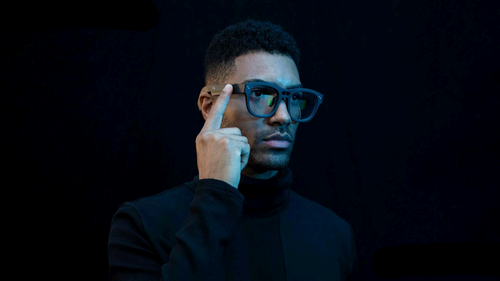TCL has had a massive CES 2024; along with revealing new TVs, a whole host of new smartphones and new tablets, the company announced that its new RayNeo X2 Lite smart specs are set to be released later this year.
But how does that compare to the first-gen RayNeo X2 smart glasses? The OG smart specs are set to be available in the first few months of the year after being available in China for quite some time, after all.
While we’re yet to go hands-on (or should that be eyes-on?) with the RayNeo X2 or RayNeo X2 Lite, here’s how the two AR-focused smart specs stack up based on available specs and features.
The TCL RayNeo X2 Lite is lighter
As you might’ve already guessed by the branding of the updated model, the RayNeo X2 Lite is lighter than the regular RayNeo X2. It’s not just by a mere 10g or 20g either; the RayNeo X2 Lite weighs just 60g, which is exactly half the weight of the 120g RayNeo X2 specs.
That’s pretty light for a pair of specs with so much packed-in tech, and that should have a positive effect on overall comfort.
The RayNeo X2 Lite aren’t the lightest smart glasses around – the Ray-Ban Meta Glasses measure in at just 48g – but it’s a step in the right direction for fully-fledged AR glasses that tend to be a little on the bulky side.
However, these are still somewhat thicker than your regular glasses, making it obvious that you’ve got a bit of tech on your face and not a regular pair of specs. We’ve still got a ways to go until the tech can be shrunk down that much.
The TCL RayNeo X2 Lite has an updated processor
The TCL RayNeo X2 Lite isn’t just lighter than the original; it also differentiates itself from its predecessor in the processing department.
More specifically, the RayNeo X2 Lite uses Qualcomm’s first AR-dedicated chipset, the Snapdragon AR1 Gen 1, in place of the Snapdragon XR2 Gen 1 chipset found within the regular RayNeo X2 specs.
While there’s no specific power comparison between the two chipsets – which is understandable, given the XR2 is a VR-focused chip while the AR1 is focused on AR – it’s worth noting that the Snapdragon XR2 is quite a bit older than the AR1. For context, the Snapdragon XR2 Gen 1 chipset is the same as that found in the Meta Quest 2, a headset that launched in 2020.
The Snapdragon AR1, on the other hand, launched alongside the more powerful Snapdragon XR2 Gen 2 chipset in October 2023. That’s a three-year gap between the release of the chipsets, and if it’s anything like the smartphone chip market, that could translate to a massive boost in performance.
We’ll have to wait and see how that translates to real-world use for now, though.


Both offer a futuristic glasses-based AR experience
Both the TCL RayNeo X2 and X2 Lite differentiate themselves from the likes of the Ray-Ban Meta Glasses and Huawei Eyewear 2 by going all-in on the AR experience, complete with transparent displays embedded within the lenses of the glasses to overlay digital elements onto the real world.
Regardless of the generation of specs you opt for, the AR experience should be broadly similar. With the X2 and X2 Lite, TCL has focused heavily on AI with a smart assistant, real-time translation and 3D map navigation alongside more standard features like photo and video capture, music playback and even notification support from a connected smartphone.
The smart assistant is powered by TCL’s own language model, with the companion able to hold a regular conversation for those craving a chat. It can also provide suggestions on places to check out in the local area.
It’ll certainly be interesting to see if and how developers adopt apps for the smart specs in the coming months as the glasses become readily available in the Western market.
The TCL RayNeo X2 Lite has brighter screens
Both the RayNeo X2 and X2 Lite offer AR capabilities with embedded screens within the lenses, but the RayNeo X2 Lite pulls further ahead when it comes to overall brightness, capping out at a bright 1500nits compared to the regular RayNeo X2’s 1000nits.
For context, 1500nits is the same maximum brightness you’ll find from smartphones like the Google Pixel 7 Pro and Xiaomi 12 Pro, phones we praised for having a perfectly bright display ideal for use outdoors.
This should hopefully translate to a much more comfortable viewing experience from the RayNeo X2 Lite, especially when using the smart specs in brighter indoor and outdoor environments. There’s not much point in using AR navigation if you can’t see the arrows on a sunny day, right?
Both are set to go on sale worldwide this year
TCL confirmed at CES 2024 that the TCL RayNeo X2 specs are set to launch worldwide sometime in Q1 2024 with a Kickstarter campaign.
Why Kickstarter? According to TCL, it’s a niche product with early adopters and Kickstarter allows the company to craft specific bundles for those dedicated fans. It reassured Trusted Reviews that it’d become available via regular channels later this year.
The RayNeo X2 Lite specs, on the other hand, have a more general Q3 2024 launch window. It’s unclear whether it’ll go down the same Kickstarter route as the regular specs or whether it’ll simply go on sale, but we’re hoping for the latter.

